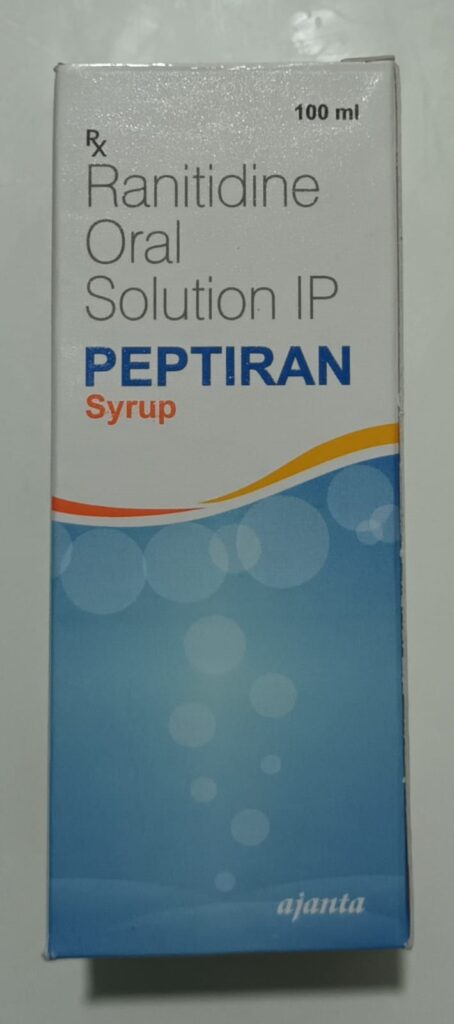Ranitidine
Reviewed by Dr Bipin B. 
-
- Drug class: H2 antagonists
- Generic name: Ranitidine
- Brand name: Aciloc, Ranitas, Rantac
Ranitidine belongs to a class of drugs called H2 blockers, which work by reducing the amount of acid produced by the stomach. It is available both over-the-counter and by prescription in countries like India but, was withdrawn from the market of the United States in April 2020. It is available in markets in various forms including tablets, capsules, and syrups. Ranitidine has been used to treat stomach ulcers and gastroesophageal reflux disease (GERD).
In April 2020, the United States Food and Drug Administration (FDA) directed all manufacturers of ranitidine-based products to withdraw them from the market due to the presence of an impurity called N-nitroso dimethylamine (NDMA). NDMA is a probable human carcinogen, which means that it could potentially increase the risk of cancer with long-term exposure. When Ranitidine is stored at higher temperatures or for longer periods, the level of NDMA increases as the NDMA can form as a result of the breakdown of ranitidine.
Easiest way to understand: How Ranitidine works
Ranitidine is an antiulcer drug that is available in the market under various brand names such as Zintac, Rantac, and Aciloc. Before discussing ranitidine, let’s talk about how acidity occurs in our stomachs.
When we eat food, the pH of our stomach increases, becoming more alkaline. In response, acid secretion is triggered to aid in the digestion of food. However, excessive acid secretion can lead to damage to the inner lining of our stomach, known as the mucosa, resulting in various diseases such as peptic ulcers and gastroesophageal reflux disease (GERD). Antiulcer drugs are used to prevent and treat these conditions.
One group of drugs used as antiulcer medications is known as histamine H2 receptor antagonists. This group includes drugs like cimetidine, ranitidine, famotidine, and roxatidine. Ranitidine, specifically, works by reducing acid secretion.
In our gastric mucosa, there are parietal cells responsible for acid secretion. The histamine H2 receptor plays a role in this process. When activated, it triggers the secretion of histamine, which then activates the proton pump. The proton pump, in turn, produces hydrogen ions, leading to the production of acid.
Ranitidine acts as a histamine H2 receptor antagonist. When taken, it starts working within about half an hour by inhibiting the secretion of histamine. Consequently, neither histamine secretion nor the activation of the proton pump occurs. This means no hydrogen ion production and, ultimately, no acid production. In cases of acidity, where acid production is either high or normal, reducing acid production is a crucial step in treating the condition. As acid decreases, ulcers and wounds begin to heal.
I hope this explanation helps you understand how ranitidine works as an antiulcer medication.
5 Features of Ranitidine:
- longer duration of action
- low propensity to cause CNS effects
- insignificant drug interaction
- lower side effects
- available as over the counter drugs
Uses of Ranitidine:-
- Indigestion
- Heart burn
- Duodenal ulcer
- Gastric ulcer
- Stress ulcer
- Gastritis
- Zollinger Ellison syndrome
- Gastroesophageal reflux disease
- Aspiration pneumonia
Adverse effects of Ranitidine:
overall incidence of side effects is lower however, following can be noticed.
- Headache, Dizziness and bowel upset.
- Rashes
- CNS effects are rare.
- Hepatic injury is rare.
Stop using this medicine if you have sever side effects and visit nearest hospital for further management.
Drug interaction:
Drug interaction with other drugs has been reported, but most have no clinical significance. Hence, Ranitidine is safe to use.
Dosages of Ranitidine:
150 mg twice a day or 300 mg at bedtime.
50 mg iv 8 hourly.
iv infusion @0.1-0.25 mg/kg/hr can be given in case of stress ulcer.
Syrup is available for children in the strength of 75 mg /5 ml.
It should be taken orally 30- 60 minutes before eating food which causes heart burn.
150 mg twice a day or 300 mg at bed time.
No, it’s not a painkiller. As we know heartburn occurs due to the over secretion of gastric juices and Ranitidine decreases the secretion of acid produced by our stomach. The mucosal layer of the stomach heals as the secretion of gastric juices reduces.
Ranitidine control acid secretion for up to 12 hours.
- Headache,
- Dizziness and
- bowel upset.
No, it has no role in relieving gas. It is a medicine for ulcers and acidity.
Simethicone helps the gas to pass through one’s digestive tract.
No, but Doctor and patient both are aware of the fact that it causes cancer so, not used so frequently in the present time.
It neutralizes the acid present inside the stomach immediately. hence, relieves acidity immediately and is useful in acid reflux disease, but inferior to Omeprazole and Ranitidine in ulcer treatment.
yes, if it is given by intravenous route rapidly, it causes bradycardia.
yes, if it has been consumed in excess quantity.
PPI like Omeprazole/Pantoprazole/Esomeprazole is superior to Ranitidine.
Consult your doctor before taking Ranitidine as it has already been banned in USA, however, it is still available in many countries.
Yes, no dose modification required.
It takes at least 30 min to suppress acid secretion.
Consult your doctor before taking Ranitidine. Digene syrup is better alternative for mild gastric upset.
Take the recommended dose as soon as possible. if it’s time for another dose, don’t take double dose.
Both omeprazole and pantoprazole are PPIs commonly used to treat conditions related to excess stomach acid production, such as reflux esophagitis, gastroesophageal reflux disease (GERD) and peptic ulcers. While they belong to the same class of medications and work in similar ways, there may be some differences between them that can make one more suitable for an individual depending on their specific needs.
Effectiveness: Both drugs are generally effective in reducing stomach acid production. However, individual responses can vary, and what works well for one person may not be as effective for another.
Dosage and Frequency: Omeprazole is typically taken once a day, whereas pantoprazole is available in both once-daily and twice-daily formulations. The specific dosage and frequency will depend on the condition being treated and the doctor’s recommendation.
Absorption and Onset of Action: Omeprazole and pantoprazole have different absorption rates, with pantoprazole being more readily absorbed by the body. Pantoprazole also has a slightly faster onset of action, meaning it may provide relief more quickly.
Drug Interactions: Both omeprazole and pantoprazole can interact with other medications. It is important to discuss your current medications with your doctor to ensure there are no potential interactions.
Side Effects: Both drugs have similar side effects, like headaches, nausea, diarrhoea, and abdominal pain. However, individual experiences can vary, and some people may tolerate one medication better than the other
Omeprazole is PPI while Ranitidine is histamine H2 receptor antagonist. Although gastric acid control is better achieved by Omeprazole and considered better than Ranitidine ; Ranitidine has already been banned in many countries as it causes cancer.




